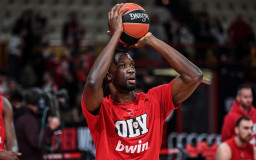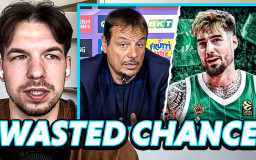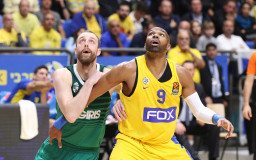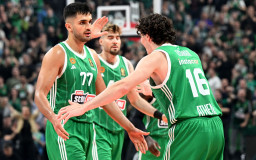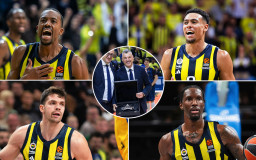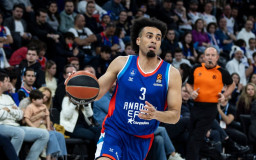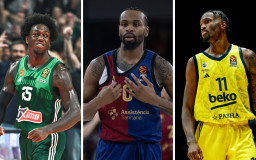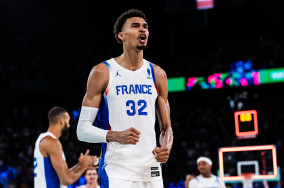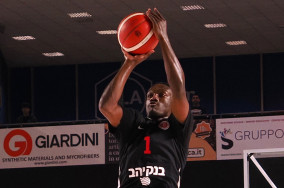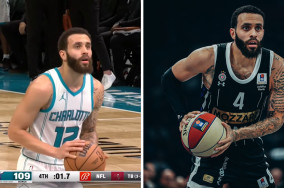Many college basketball prospects have been dubbed the next big thing, but many fail to reach those expectations, and some trail very far from them. From Emoni Bates to Jabari Parker, let's talk about the biggest unfulfilled potential the NBA has ever seen.
When it comes to young guys fulfilling their potential, I think we've been spoiled by LeBron, who was predestined for greatness and delivered. However, sometimes, the weight of expectation can only be a hindrance.
Emoni Bates
This is an overused term, but KD is a unicorn. Yet, that hasn't stopped us from trying to find a successor. The most recent to receive this tag was Emoni Bates.
As a sophomore in high school, Emoni was already on a Sports Illustrated cover and had been named Gatorade National Boys' Player of the Year.
For all of us on the hype train at that time, we saw a rangy, multi-level scorer adept at shooting off the bounce. If you squinted just enough, you might even see the Slim Reaper.
So, what happened to Emoni Bates? A mixture of things: some hubris on Emoni's part, and ours, for jumping the gun too early. Emoni reclassified and skipped his senior year to start his college career, which, honestly, was a saga.

We were promised a smaller KD; what we got was a trigger-happy scorer with poor shot selection, minimal development in playmaking, and little interest in defense. He also wasn't without his fair share of controversy.
He eventually transferred to Eastern Michigan, where he posted improved stats, but many people had lost interest by that point. Before the 2023 Draft, scouts were quoted as saying Emoni was "not even on our board."
Eventually, he was drafted in the 2nd round, 49th overall, and made the All-Summer League 2nd team this summer. So, there's still a chance he finds his place in the league, but it's still far from what we were promised.
Jabari Parker
Like Emoni Bates, Jabari Parker was also the subject of a Sports Illustrated cover story. There, he was dubbed "the greatest high school player since LeBron." Now, to be honest with you, this one is a bummer.
If you ever watched Jabari in high school and during his year at Duke, you saw a skillful forward with excellent size, a deceptively good handle, and a well-rounded offensive game. Some even compared him to Carmelo Anthony.
While there were already some questions about Parker's athletic upside and his defense, we'll never really know what could've been due to injuries. After back-to-back ACL tears early in his career, his athleticism was basically gone.
His 8 seasons in the NBA were defined by struggles with injuries and finding his role. The number 2 pick from the 2014 NBA Draft ended up playing overseas for Barcelona last year, and he gave a good account of himself.
We even saw how much that opportunity meant to him recently. So, despite the adversity, I hope this ends up being a good spot for Jabari, and I'm sure, like me, you'll be rooting for him at Barca.
Greg Oden
Parker wasn't the only highly-touted prospect derailed by injuries. Greg Oden was once a can't-miss center prospect, often dubbed the next Shaq. If you want a fun watch, check out Oden's high school mixtapes.
It's like watching a 30-year-old man dominate teenagers. While it was exciting to see a 7-footer dominate from the start, it also foreshadowed his problems. In sixth grade, Oden had a growth spurt that dislocated his hip.
After surgery to repair it, Oden was left with one leg shorter than the other. It's believed that this imbalance contributed to the chronic knee problems that plagued his short NBA career. While Oden had the size, skill, and athleticism to be great, his body just couldn't sustain it.
Thon Maker
Like many of you, I was taken in by the hype surrounding Thon Maker as a younger man. In many ways, Thon was the first KD pretender to take the internet by storm. A 7-foot Sudanese sensation, some compared him to two Hall of Famers: Kevin Durant and Kevin Garnett.
Even KG himself gave him his seal of approval. It was hard not to buy into the excitement. Thon could run the floor like a deer, catch lobs, block shots, and even cross up smaller defenders before draining pull-up jumpers.

Unfortunately, speculation about his real age suggested he might have been much older than his peers, explaining his dominance. Regardless, Thon's game didn't translate well to the NBA. He was too thin and physically weak to play as a big, and not skilled enough to be a small forward.
He mostly ended up as an ineffective stretch five, playing a few seasons for the Bucks before bouncing around the league. Lesson learned: don't be fooled by high school mixtapes.
Felipe Lopez
Next up is Felipe Lopez, one of the first high school prospects to be dubbed the heir to Jordan. The lesser-remembered Lopez was the subject of the ESPN 30 for 30 documentary The Dominican Dream.
An ultra-athletic guard prospect with an immigrant background, he made a name for himself in New York City during the 90s. Wherever Felipe played, he was trailed by legions of Dominicans who packed venues to watch him. Some even said Felipe was the most hyped prospect in NYC history.
Unfortunately for Lopez, his game never fully translated to the collegiate level at St. John's. While he was drafted 24th overall in 1998, he struggled to stick in the NBA for more than a few seasons before injuries cut his career short.
Despite this, Felipe remains an icon in the Dominican community, contributing through activism and his non-profit, which helps underprivileged Dominican youth. So, by all accounts, he's still a winner.
Schea Cotton
Have you ever heard of Schea Cotton? Probably not, but he's certainly remembered by the legends of his era.
Known as "The Manchild" because he was essentially a grown man by the 8th grade, Schea was an overpowering physical specimen who played above the rim and attacked the basket relentlessly.
He even participated in pickup games with NBA legends as a teenager. In the end, Schea's story is sad. He sustained an injury in AAU play and was later subjected to harsh NCAA rulings that derailed his career. Though he never made it to the NBA, Schea remains an urban legend respected by NBA Hall of Famers from that era.
Sebastian Telfair
Like Schea Cotton, Sebastian Telfair was a big deal back in the day. The "King of Coney Island" drew crowds of celebrities, similar to Bronny in his Sierra Canyon days.
A flashy but undersized point guard, Telfair's highlight reels were filled with ankle-breaking moves, flashy assists, and acrobatic finishes at the rim. In many ways, he was the ultimate New York City point guard.
Telfair also appeared on a magazine cover alongside LeBron, touted as destined to "rule the world." After a family tragedy, Telfair chose to skip college and declare for the 2004 NBA Draft, where the Portland Trail Blazers drafted him with the 13th pick.
However, his rookie season was a struggle, as he was 10th in minutes and failed to make a significant impact. This would become a recurring theme in his career. In high school, Telfair was the quickest player on the floor and dominated the lane, but in the NBA, those opportunities disappeared.

He never fully developed a reliable jump shot, which, combined with his lack of size and defensive shortcomings, limited his impact. He ended up as a backup guard for 10 seasons, a solid but unremarkable career—not the "takeover" we had envisioned.
Ultimately, when it comes to the NBA, there are many reasons why prospects don't pan out.
Some people peak too soon, some take the wrong path or the wrong advice, and some have bodies that betray them. In today's digital age, the only thing that's really changed is our access.
Prospects generate thousands of clicks, impressions, video clips, mixtapes, and message board takes. By the time many kids reach high school, they already have national reputations. But remember this: becoming an NBA great isn't predetermined. Every path is paved with equal opportunities, hard work, and even luck.
Watch the video:
Like what we are doing? Support us by becoming BN+ member.